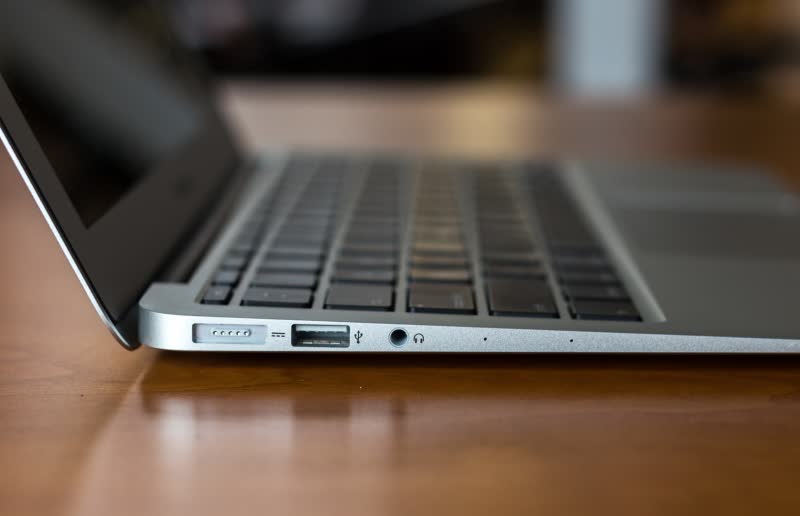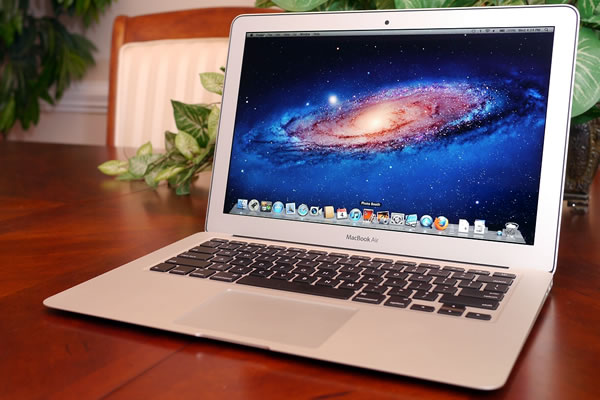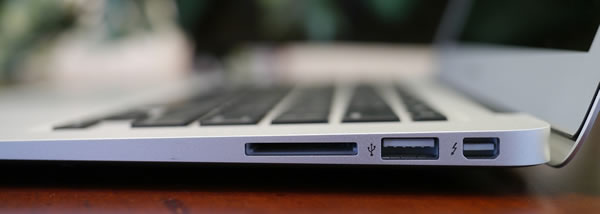Analysts and users alike are still talking about the new MacBook Pro with Retina display that was introduced last month during Apple's keynote at the annual WWDC, but that wasn't the only new system that Cupertino ousted at the event. As most expected, the standard MacBook Pro and the MacBook Air were refreshed for 2012, the latter of which we will be looking at today.
Steve Jobs unveiled the first MacBook Air in early 2008 to mixed reviews, but a series of redesigns and hardware refreshes through the years have resulted in a product line that has had a huge impact on the industry. PC makers have struggled to match the Air's extremely thin and simplistic design, prompting Intel to announce the ultrabook initiative at Computex in 2011.
New for the 2012 MacBook Air is the Intel Ivy Bridge processor sporting HD 4000 graphics, higher capacity storage and memory options, as well as an improved 720p Facetime HD camera, and support for USB 3.0. The 13-inch system also received a $100 price cut, now starting at $1,199. The smaller 11-inch system retains the same $999 entry price, however.
The system on our test bench is the base 13-inch MacBook Air which ships with a 1.8GHz dual-core Intel Ivy Bridge Core i5 processor that Turbo Boosts up to 2.8GHz, 4GB of 1600MHz DDR3L SDRAM, 128GB of flash storage and integrated Intel graphics.
The new MacBook Air doesn't deviate from the design of previous models, which certainly isn't a bad thing. The notebook is tapered into a wedge shape that is narrower near the front and thicker at the rear. Of course we use the term thick loosely, as the system is still extremely thin and lightweight at only 0.68-inches at the thickest part and 2.96 pounds.
At the front of the Air is a small section cut into the base that is just large enough to get a finger or two under to lift the display. Opening the lid reveals the glossy 13.3-inch diagonal LED backlit display, operating at 1440 x 900 with a 16:10 aspect ratio. Just above the screen is the 720p FaceTime HD camera.
We find the MagSafe 2 power port, a USB 3.0 port, headphone jack and integrated microphone on the left side of the Air, while the right side is home to an SD card reader, another USB 3.0 port and a Thunderbolt port. There's nothing of interest on the backside or the rear save for four rubber feet and a series of non-standard screws to access the internals.
The outer lid features the familiar white Apple logo that glows when the system is in use. The keyboard and touchpad are familiar as well, both performing above and beyond expectation in my testing. It's also worth noting that the keyboard is backlit should you find yourself working in a poorly lit environment.
The Air arrived with OS X Lion preinstalled, although Apple is quick to point out that OS X Mountain Lion is coming soon and anyone that buys a Mac today will get a free upgrade to the next release when it becomes available later this summer.
It's worth mentioning that I'm strictly a Windows user, so I'm reviewing the hardware with what could be called fresh eyes. I've had extensive experience with iOS, so everything isn't completely foreign to me but it's different nevertheless.
Having said that, the setup process for a new user isn't much different than you'd find on a Windows machine. You're asked to select your preferred language and keyboard layout as well as link or create an Apple ID and provide or take a photo to use as your profile photo when logging into the machine.
One of the great things about working on a Mac is that only one company sells it. Translation: Apple doesn't load the Mac down with licensed bloatware designed to further line their pockets and cause headache to the end user. This is a common issue that Windows buyers face, typically excluded only from boutique builders or when you build your own system.
If you aren't familiar with working on the Mac operating system, there's definitely a learning curve so prepared to become frustrated and visit Google frequently for help. Apple veterans should feel right at home, though Julio, our editor in chief, notes that OS X Lion shipped with a number of iOS-like features that for a while had a learning curve of their own.
For example, the trackpad gesture for scrolling up and down was inverted to mimic a touch screen. Launchpad and Mission Control are another two such features that have had long-time Mac users either adapting or completely ignoring them. All in all, new OS X releases come often (every 1-2 years) and most of the time improve upon the previous version without major paradigm shifts or disruptions.
I decided to install Windows 7 alongside OS X using Boot Camp as part of our testing and benchmarking primarily out of necessity as Apple's operating system wasn't fully compatible with our array of benchmark software. Specifically, Fraps doesn't work in OS X, so I was unable to gather apples-to-apples results in StarCraft II to compare with recently reviewed Windows machines. The experiment had an additional side effect as I was able to gauge how well Windows 7 performed on Mac hardware.




